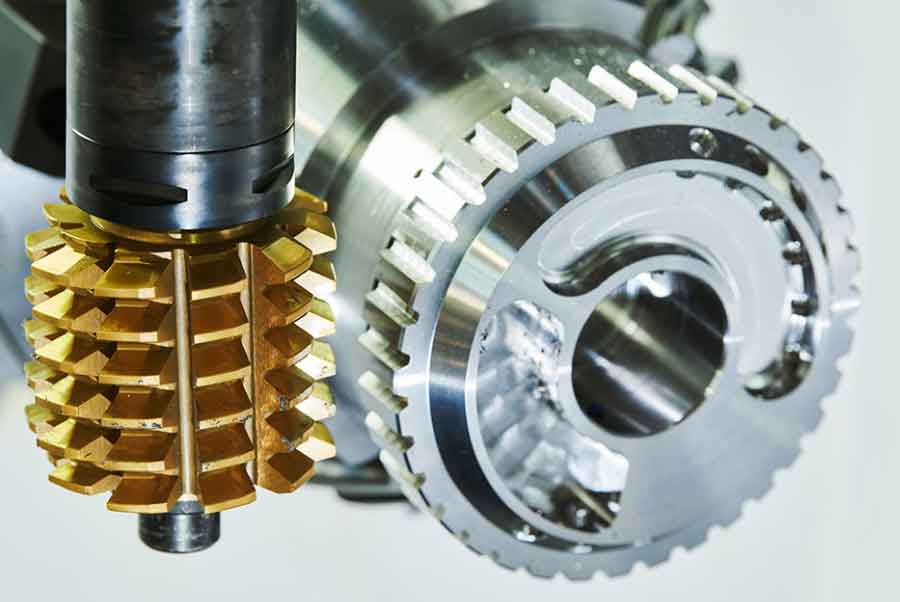Gear hobbing is a widely used gear manufacturing process that offers several benefits in terms of efficiency and accuracy. Here’s a closer look at how gear hobbing enhances these aspects in gear manufacturing:

- Efficiency through Continuous Cutting: Gear hobbing enables continuous cutting, meaning multiple gear teeth can be generated in a single rotation of the workpiece. This results in a highly efficient process, especially for gears with a large number of teeth. Continuous cutting minimizes idle time and maximizes productivity, making gear hobbing a cost-effective method for high-volume production.
- High Accuracy in Tooth Profile Generation: Gear hobbing is known for its ability to produce accurate gear tooth profiles. The hob’s teeth are precisely designed to generate the desired tooth shape, pressure angle, and tooth spacing. The helical cutting action of the hob ensures smooth and consistent tooth formation, resulting in precise gear tooth profiles that conform to design specifications.
- Versatility in Gear Types and Sizes: Gear hobbing can be used to manufacture a wide range of gear types, including spur gears, helical gears, and worm gears. It is suitable for both small and large gears, offering versatility in gear size. By using different hobs and adjusting the machine setup, gear hobbing can accommodate various gear configurations, module sizes, and tooth profiles.
- Consistency and Repeatability: Gear hobbing provides excellent consistency and repeatability in gear manufacturing. Once the machine setup and cutting parameters are optimized, the process can be replicated accurately for batch production. This ensures consistent gear quality, tooth geometry, and dimensional accuracy throughout the manufacturing process.
- Excellent Surface Finish: Gear hobbing can achieve a high-quality surface finish on gear teeth. The cutting action of the hob, coupled with proper cooling and lubrication, helps minimize surface roughness and improve the overall gear finish. This is particularly important for gears that require smooth operation, reduced friction, and minimized noise generation.
- Suitability for Various Materials: Gear hobbing can be applied to a wide range of materials, including metals such as steel, cast iron, and non-ferrous alloys. The cutting tools used in hobbing are designed to withstand the rigors of cutting different materials, ensuring effective material removal and maintaining accuracy across various workpiece materials.
- Cost-Effectiveness: Gear hobbing offers a cost-effective solution for gear manufacturing, especially for large production runs. The high cutting efficiency and continuous cutting action reduce overall production time and labor costs. Additionally, gear hobbing allows for material savings as it removes only the necessary material to form gear teeth, minimizing waste.
- Process Control and Automation: With advancements in technology, gear hobbing processes can be further enhanced through automation and advanced process control systems. These systems can monitor and adjust cutting parameters in real-time, ensuring optimal performance, reducing human error, and enhancing overall process control.
Gear hobbing is a proven method for efficient and accurate gear manufacturing. By leveraging the benefits of gear hobbing, manufacturers can achieve high-quality gears with precise tooth profiles, excellent surface finish, and consistent dimensional accuracy. These factors contribute to improved gear performance, smoother operation, and enhanced overall gear system efficiency.
